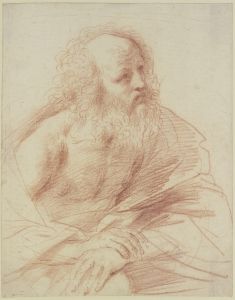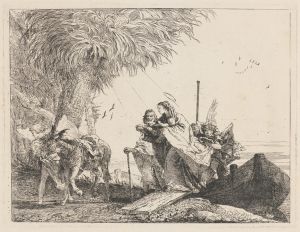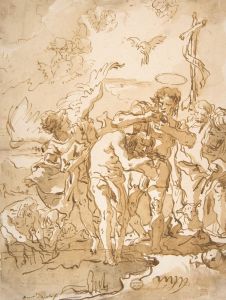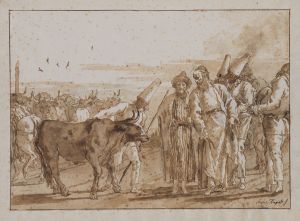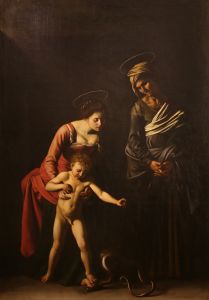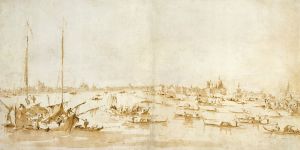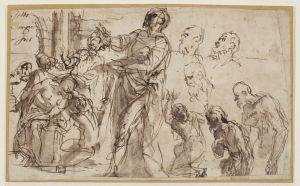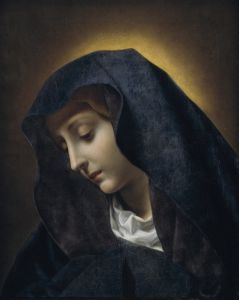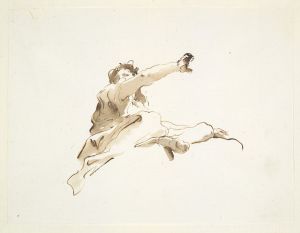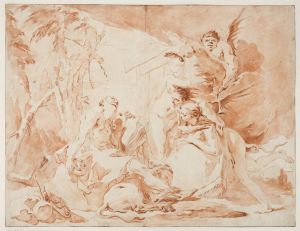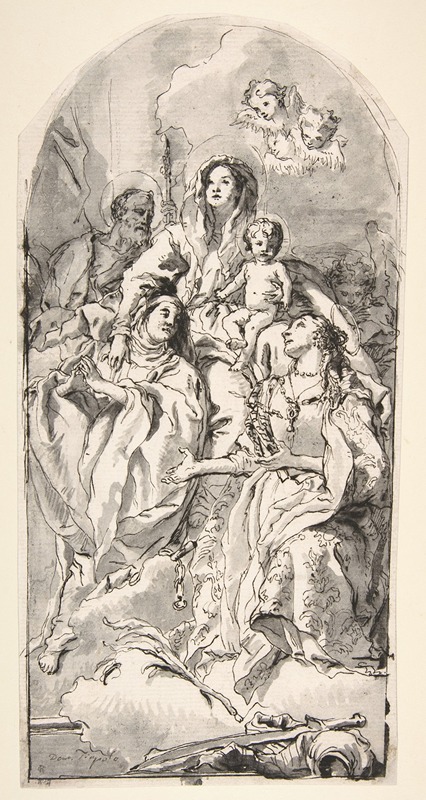
The Holy Family with Two Female Saints
A hand-painted replica of Giovanni Domenico Tiepolo’s masterpiece The Holy Family with Two Female Saints, meticulously crafted by professional artists to capture the true essence of the original. Each piece is created with museum-quality canvas and rare mineral pigments, carefully painted by experienced artists with delicate brushstrokes and rich, layered colors to perfectly recreate the texture of the original artwork. Unlike machine-printed reproductions, this hand-painted version brings the painting to life, infused with the artist’s emotions and skill in every stroke. Whether for personal collection or home decoration, it instantly elevates the artistic atmosphere of any space.
Giovanni Domenico Tiepolo, an Italian painter and printmaker, was an influential figure in the 18th-century Venetian art scene. He was the son of the renowned painter Giovanni Battista Tiepolo and followed in his father's footsteps, developing a distinctive style that combined elements of the Rococo with a keen sense of narrative and character. One of his notable works is "The Holy Family with Two Female Saints," which exemplifies his skill in composition and his ability to convey religious themes with warmth and humanity.
"The Holy Family with Two Female Saints" is a painting that reflects Tiepolo's mastery of religious subject matter, a common theme in his oeuvre. The painting depicts the Holy Family, consisting of the Virgin Mary, Saint Joseph, and the infant Jesus, accompanied by two female saints. While the identities of these saints are not specified in the title, they are often depicted in religious art as figures such as Saint Anne, the Virgin Mary's mother, or Saint Elizabeth, the mother of John the Baptist. However, without specific identifiers in the painting or historical records, their exact identities remain open to interpretation.
Tiepolo's work is characterized by its vibrant use of color and dynamic composition. In "The Holy Family with Two Female Saints," he employs a soft yet vivid palette that brings a sense of warmth and intimacy to the scene. The figures are arranged in a harmonious composition, with gentle interactions that suggest a familial bond and spiritual connection. Tiepolo's brushwork is fluid and expressive, capturing the delicate features and serene expressions of the figures, which convey a sense of divine grace and human tenderness.
The painting is also notable for its attention to detail and the subtle interplay of light and shadow. Tiepolo's use of chiaroscuro enhances the three-dimensionality of the figures and adds depth to the composition. The light seems to emanate from within the scene, illuminating the faces of the Holy Family and the saints, creating a focal point that draws the viewer's eye. This technique not only highlights the central figures but also imbues the painting with a sense of spiritual illumination.
Giovanni Domenico Tiepolo's work often reflects the influence of his father, yet he developed his own artistic voice, characterized by a more intimate and personal approach to religious themes. "The Holy Family with Two Female Saints" is a testament to his ability to blend narrative and emotion, creating a work that is both visually captivating and spiritually resonant.
While specific details about the commission or provenance of this particular painting may not be extensively documented, Tiepolo's works were highly sought after during his lifetime, and he received numerous commissions for religious and secular projects. His paintings and frescoes can be found in churches, palaces, and museums across Europe, attesting to his enduring legacy as a master of 18th-century Venetian art.
In summary, "The Holy Family with Two Female Saints" by Giovanni Domenico Tiepolo is a fine example of his artistic prowess and his ability to convey religious themes with warmth and humanity. Through his skillful use of color, composition, and light, Tiepolo creates a scene that is both intimate and spiritually uplifting, reflecting the enduring appeal of his work in the canon of art history.





